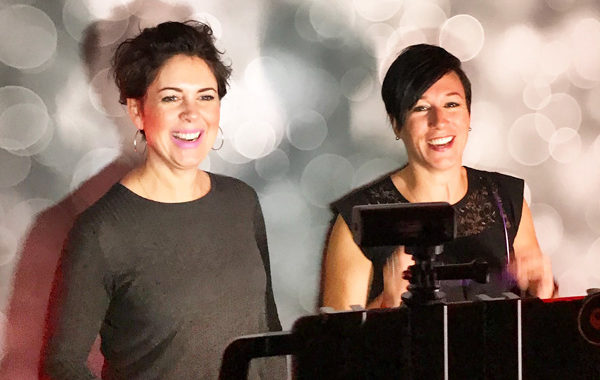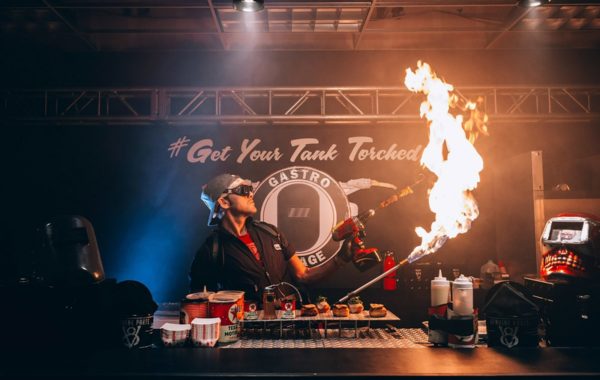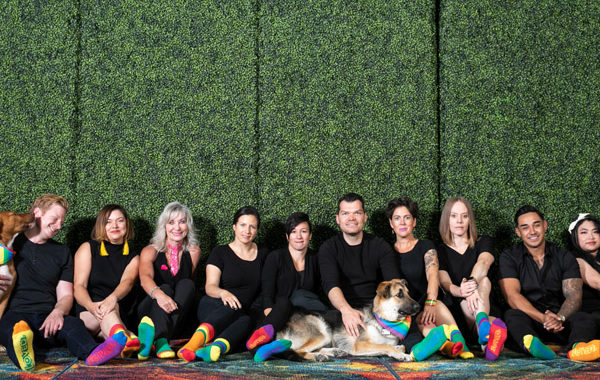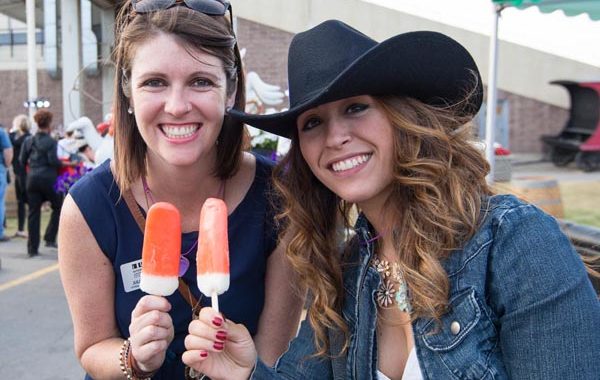There are many things we love about our industry and our jobs – the quest to continually raise the bar, the rush of taking on new challenges, the excuse to pick up new Gala-ready outfits on the regular – but the very best part is hands down the smart, talented, and inspiring people we get to collaborate with. Case in point: Lisa Marks, CSEP, BComm, a multi-talented, whip-smart event prof whom we’ve worked alongside for many years in her role as head of events for Shaw Communications. Lisa recently decided to strike out on her own with her new business Brand Alive, bringing her decade of industry experience and deep knowledge of experiential marketing and the connecting of brand to events to a diverse range of clients.

From innovative activations at major festivals to culture-defining employee events, brands and live experiences have never been more intertwined. As this side of the industry continues to explode, a rich understanding of brands and how they communicate becomes more and more critical for event profs. We asked Lisa to share her insight on taking brands to a more experiential and interactive level – here’s what she has to say.
Q. How has experiential marketing become so critical to today’s smartest brands?
“The modern Internet of Things and its most powerful tool, social media, have created a constant 24/7 visual grading system, where brands are not only seen but evaluated online, at all hours of the day. Smart brands are using this to their advantage, opting to be extremely visible and leveraging human gatherings as a way to make a strong brand impression both in person and online. They know that if they activate in a way that is photographable, as well as in a way that drives people to generate content online on their behalf, their reach is truly unlimited. Capitalizing on in-person experiences is just smart: what better way to track engagement, responses, queries, interest, or impressions than on the ground where the people are. Go where the people are!”

Q. Why is experiential marketing so powerful?
“Now more than ever, people want to interact with brands in order to feel connected to them, or at least to understand the impact that the brand can have on their life. At the heart of any experiential marketing endeavour is the desire to personify a brand, and to make (and capitalize on) in-person connections.


A human-to-human connection or personal experience, however big or small, ignites emotion. We know that emotions are not ‘just feelings’ and every time a human being feels something, their body goes through a physiological change – chemicals are released and behaviour is impacted. This is obviously extremely complex, but suffice to say, the biological systems that fuel our bodies can be used to the advantage of organizations in their mission to ignite change. At their core, events and human gatherings are created to evoke an emotional response or better yet, a change, and experiential marketing does the same. I have yet to see a banner or sponsor loop that can create this kind of response and truly result in change.”
Q. How do you determine if a festival, conference, or other event is the right fit for your brand?
“Let’s go a bit deeper. The area to focus the most energy on is the relationship with the property or parent brand, versus one specific event or festival. To get the most bang for your buck as a corporation or brand, find a property to partner with that is a long-term match. Take your value pillars and use them as your guiding light to seek out community partnerships with brands or properties that value the same things, or at the very least have a vision or mission that works well with yours. This could be anything from youth in sport, to healthy lifestyle, to the STEM and educational space… anything that really means something to you/your brand, and to your audiences (customers, clients, and employees). As you explore potential partners, find out about all of the opportunities for equity building and exposure – in other words, existing events or experiences for you to get involved with. A good partner can show you numbers, data, and metrics, as well as the community impact of previous projects or events.
Once you’ve formed a partnership, year-over-year growth is essential. Seek out new opportunities to gain exposure within the partnership, perhaps in the ‘shoulder season’ between large activations. This may mean that in year one, you only activate at one event for the year with this partner. In year two, you may activate at the same event, as well as host a few additional community initiatives that leverage the brand. A good partner will come to you with ideas on how to expand your reach and engagement.
As far as deciding to activate at a specific festival or event, go back to your objectives. What do you want to get out of it and what change are you trying to inspire? Big brands usually have one of two overall key objectives they are trying to hit when considering their strategy: overall brand building and awareness, or generating sales. This actually is really critical in the decision to activate, AND to how you design the activation itself; remember, design is for data and data drives design. Often times, brands buy space at a festival or tradeshow looking to generate sales and convert a long-term customer, and yet the activation is set up for guests to walk through quickly without the time to really start a relationship and make a sale. Knowing what change you wish to ignite should dictate where you activate and how.”
Q. Are there risks that brands should be aware of, or things to consider before moving ahead with experiential marketing?
“Of course. There are some obvious risks related to insurance, liability, cause, and indemnification that can lead to a whole mess of problems for a company. In my role at Shaw, I was obsessive about involving our legal and insurance teams before we designed an activation to ensure they were aware of our approach and could have line of sight into the final result.
From a brand perspective, there is always the risk of an inconsistent or negative experience on the part of a patron or guest. We simply cannot control every single possible thing that could happen in, near, or around an activation that we are leading. Anyone that tells you something was “perfectly executed” or “flawless” is overextending the use of those words. In addition to this, every human has a unique and personal reaction to all kinds of things – and it really is these personal reactions that ultimately dictate the success of the activation, isn’t it? But on the same token, we absolutely run the risk of a negative opinion, and an even greater risk of that opinion being shared, and spread, online. Potential damage to brand reputation comes with the territory, but with the right professionals at the table in the design and production phase, the on-ground activation team’s smart reaction to any flaws, and an appropriate brand response when something isn’t received well, brands can mitigate the risk substantially.”
Q. What are the biggest lessons you’ve learned in executing branded live experiences?
“First, brand building doesn’t happen in a vacuum. Brands are really a product of the world around them, so tapping into the opinions and mindsets of humans using a live experience model is just a smart strategy.
I have learned that, in the eyes of the brand or organization, the most successful activations are ones that involve as many teams and departments from inside the business as possible, in meaningful ways. Loop the community investment team in to include a community give-back opportunity within the activation. Offer the employee communications team a chance to create an experience for employees within the activation, enabling that internal team to leverage the activation for their own goals. When multiple internal stakeholders feel like they achieved an objective out of the activation, it is no longer seen as a cost-spending activity; it is seen as a powerful tool to help the entire organization win.
Another major lesson is that messaging about products or services within the activation should be designed in a way that is super discrete and focuses more attention on amplifying WHY the brand exists, versus WHAT the brand sells or provides. This allows guests to feel safe in the space and to subtly absorb information or brand awareness. For example, when Gatorade activated at SXSW a few years ago, their experience allowed guests to don a virtual reality headset and walk into true-to-life locker rooms or on to the home fields of world-renowned sports teams. The activity within the VR experience was based around gaining ‘hydration points,’ the core driver of the brand. There happened to be images of Gatorade products around the environment, but it wasn’t a hard sell and it wasn’t an obvious central focus.”


Q. What are your top tips for creating a memorable and impactful brand activation?
- Know your objectives, and know how success will be defined in the eyes of the key decision makers within the brand.
- Design your activation to track and gather as much patron data and lead generation opportunities as possible. Then, USE IT. Follow up, warm the relationship, and build your brand lovers.
- Solve a problem for patrons at the event – water, wifi, connectivity, seating, heat, power, front-of-the-line access, etc..
- Go deep and wide by involving other strategic partners (community relationships, other sponsors, etc.) of the brand within the activation, allowing them to sub-activate within your design. This will offer your patrons access to a unique combination of brands at this one-time experience.
- Don’t overstimulate people. Allow air in the physical space and operate from a place of “less sometimes is enough.”
Q. Can you share some examples of great brand activations that you’ve been involved in personally, or just been inspired by?
“Shaw’s partnership with the PGA TOUR Champions in title sponsoring the Shaw Charity Classic and building a deep and wide activation plan within the property is extremely impactful and, in my eyes, a diamond in Canada’s sponsorship landscape.
I am also obsessed with following the activation stories during the annual SXSW festival, and eagerly await the SXSW Creative Experience Arrow Awards after the fact. I always follow the Fast Company Grill at SXSW, as they create widespread impact.”

Our sincere thanks to Lisa for sharing her valuable insight, and we encourage you to click over and connect with Brand Alive. We can tell you from personal experience that you will not be sorry you did, and that collaborating with Lisa will take your own game to a whole new level. If you have thoughts on this conversation or want to talk about how we can help you take your brand to the people, drop us a line here.
Photo credits:
Kelly Hofer
Leblond Studio
Bookstrucker
Adweek
SXSW.com




